Note: This website was automatically translated, so some terms or nuances may not be completely accurate.
Today's Seniors Are Diverse and Varied What matters more than age is "change."

Hiroyuki Murata
President, Murata Associates / Specially Appointed Professor, Tohoku University

Tetsu Saito


Japan is advancing toward super-aging, where currently one in four people, and by 2035, one in three people will be 65 or older. Since its launch in 2000, the 'Dentsu Senior Project' has tackled various aging-related themes. Tetsu Saito of DENTSU SOKEN INC., who heads the project, invited Hiroyuki Murata of Murata Associates—a leading authority on baby boomer and senior market research—to discuss the true nature of today's seniors and where to focus efforts.

Saito: Mr. Murata often says, "The senior market is a collection of diverse micro-markets." The values of someone aged 60 and someone aged 80 are completely different. Economically, the gap between the "haves" and "have-nots" among the elderly is much wider than among younger generations. Considering the diverse needs at each life stage, if we don't clearly define the starting point – which seniors and which needs we aim to address – the approach becomes far too vague.
Murata: You're absolutely right. For instance, referring to the elderly as "the elderly" tends to conjure an image of socially vulnerable individuals. On the other hand, "active seniors" often evokes an image of people with considerable assets who frequently purchase high-priced goods. In reality, neither of these is entirely accurate. Even within the same age group, individuals might purchase high-priced items at times while leading very frugal lives at others. What I always say is, "Focus on change rather than age." For instance, consider "major life stage transitions." For men, retirement is a key milestone. However, an increasing number are semi-retiring, being rehired after retirement. Full retirement might currently occur around age 65, but this age will likely rise further in the future.
Saito: Dentsu Inc.'s survey also shows a significant increase in people who want to keep working even after their second retirement at age 65.
Murata: Even so, the time eventually comes to step away from work completely. After that, major changes in lifestyle are largely driven by shifts in health status. Generally, after age 75, the rate of doctor visits, dementia onset rates, and the rate of receiving long-term care certification surge sharply. For women, it differs slightly from men. For the majority of homemakers, the first major change is when child-rearing ends – around when children start university. The second is when the husband retires. The third is when children become independent and it becomes a life for just the couple. After that, similar to men, health changes occur, and finally, when the husband passes away.
Saito: So, changes in life stages alter both consumption behavior and how time is spent.
Murata: Of course, detailed analysis of actual living conditions is essential. Even for housewives' time consumption, having a retired husband doesn't necessarily mean more free time. Many husbands become homebodies, requiring more effort. Considering this reality, the "convenience food" market—like prepared dishes and boxed lunches—can be interpreted as a growth market.
■ For seniors with strong familiarity, "personalization" is the key
Saito: The senior generation has what we call "familiarity." They've developed their own values regarding comfort and preferences in daily life, and they don't easily jump on trends like younger generations. To engage seniors, "personalization" is a crucial point. For example, as people age, they become concerned about their current state – bone density, body fat, skin age. After helping them experientially understand their true self, we can then promote products suited to their current condition. Creating that path is what I believe is important.
Murata: Health issues and matters concerning assets are naturally easy to personalize.
Saito: Another point is whether we can build a new relationship model unique to an aging society, moving beyond the traditional provider-consumer dynamic. Not just a simple supply-demand relationship, but a stronger connection. For example, many seniors remain active even after retiring at 65. Companies could provide workplaces for such individuals while building relationships with the elderly.
Murata: That's a kind of relationship-building through ownership. For instance, a business model where residents invest to establish the company when creating service-supported senior housing.
Saito: Creating mechanisms to effectively leverage the assets and wisdom that older adults possess for the next generation is absolutely essential in a super-aged society.
Murata: My calculations show that net financial assets held by those aged 60 and over—meaning savings minus liabilities—total 482 trillion yen. If even 10% of that could be mobilized, it would amount to roughly half the general account budget. Achieving that would completely transform both the economy and fiscal conditions. Ultimately, the reason seniors' assets remain idle is the three Ks of anxiety: "health concerns," "economic worries," and "loneliness fears." The best solution to address these three is to get them working. For example, if they could earn an extra 100,000 yen per month beyond their pension, most of that income would become disposable income. Working also builds social connections. It maintains mental health and reduces susceptibility to illness. It also helps curb medical and nursing care costs.
■The "Unfaithful" Senior Generation & A Golden Opportunity for Building Long-Term Relationships
Saito: When companies engage with seniors, I think it's also crucial to consider how to build long-term relationships. It's a mindset that turns the perceived hurdle of "familiarity" to our advantage. Once seniors like something, they tend not to switch. Building a solid relationship early on can bring lifelong value and tangible benefits to the company.
Murata: At the women-only fitness club I've been involved with, the average customer age is now around 60. It's grown to over 1,480 locations nationwide, with approximately 650,000 members. The staff supporting them are from a generation that could be their daughters or granddaughters. Initially, the staff sometimes felt brushed off by the middle-aged and older female members. But they worked hard to overcome this, studying how to greet and speak to them properly. As they started seeing results, they began receiving words of gratitude like, "Thanks to you, I've gotten better. Thank you." This builds the staff's confidence and spreads their reputation to other customers. Ultimately, building long-term relationships is about accumulating these kinds of improvements. When the relationship between staff and customers improves, the overall atmosphere of the store improves too, leading to higher retention rates for new customers.
Saitō: Trust isn't just built on logic; it also has an emotional aspect, right? I think that's a crucial point for building long-term relationships. Thank you for sharing such valuable insights.
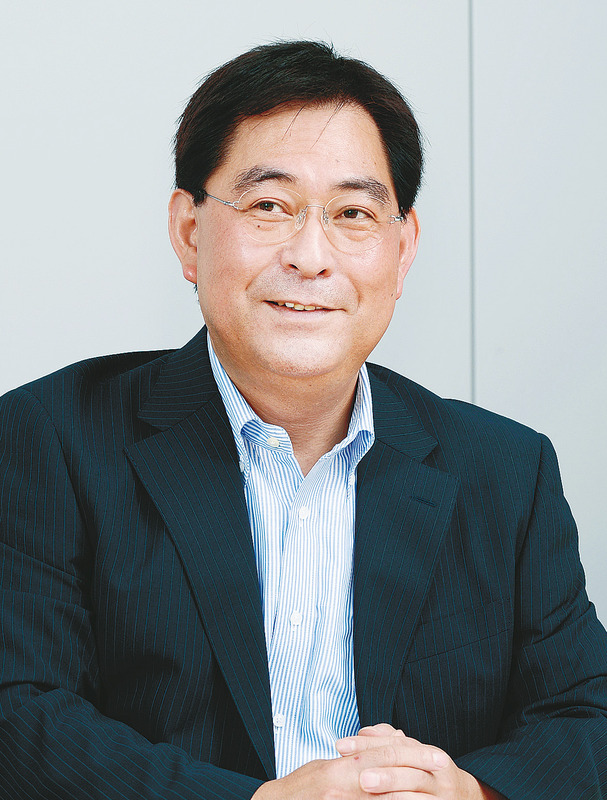
President, Murata Associates
Tohoku University Specially Appointed Professor
Hiroyuki Murata
Completed graduate studies at Tohoku University's Graduate School of Engineering in 1987. After working at Japan Research Institute and other organizations, established Murata Associates in 2002. Appointed Specially Appointed Professor at Tohoku University in 2006. As a pioneer in the senior business field, he has participated in new business development and management for numerous companies. As a leading authority on aging society research, he has given many lectures and authored numerous publications. Has held numerous public positions, including roles at the Ministry of Economy, Trade and Industry. Major publications include "The Textbook for Successful Senior Business" (Nikkei Publishing) and "The Impact of the Senior Shift" (Diamond Inc.), among many others.

Head of the Curation Group, DENTSU SOKEN INC.
Head of Dentsu Inc. Senior Project
Toru Saito
Joined Seibu Department Stores in 1982. After working at the Distribution Industry Research Institute (Saison Research Institute) and PARCO, he joined Dentsu Inc. in 1997. Currently involved in a wide range of senior-related businesses, from senior marketing and business development in an aging society to product development for seniors, facility development, and event production. Author of "Baby Boomer Marketing" (Dentsu Inc., co-authored) and "Why Kichijoji Became 'The Most Desirable Place to Live Now'" (Bunshin Publishing). Also contributes extensively to magazines and other publications.


■ AEON's G.G Events Are a Hit. What Are the Key Planning Points?


Aeon has positioned its senior shift as one of the pillars of its mid-term management plan. At the core of this strategy is the G.G (Grand Generation) concept. G.G is a new term meaning "the finest generation." It embodies the desire to support seniors who wish to live the rest of their lives proactively, brightly, and positively.
The "G.G Collection" event symbolizes this concept. Now in its third year, the event was held April 11-13 at Makuhari Messe in Chiba City and the adjacent AEON Makuhari Shintoshin Store. Forty-eight companies and three local governments, including various AEON Group companies, set up 61 booths, offering visitors diverse new experiential values. Makuhari Messe alone welcomed 57,000 visitors.
AEON is also actively pursuing senior-focused store initiatives. In May 2013, it opened the "G.G Mall" at AEON Kasai Store (Edogawa Ward, Tokyo), followed by another at AEON Marinepia Store (Mihama Ward, Chiba City) in April 2014. Conceptualized as "a place for adults to enjoy 'me'," these malls feature cafes, cultural clubs, fitness facilities, and a permanent stage hosting diverse daily events. The company is also proactive in its customer strategy, offering the "G.G AEON Card" for those aged 55 and over and the "G.G WAON" electronic money, providing various benefits.
■End-of-Life Planning Tours Also Popular: Club Tourism's Tour Planning
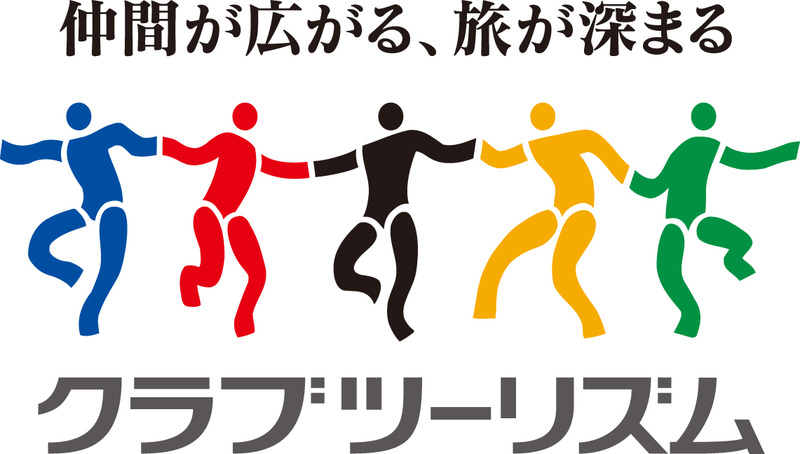

Amid Japan's rapidly aging society, Club Tourism has gained overwhelming support from seniors. Primarily a mail-order travel company, it delivers the travel information magazine "Tabino Tomo" to 3 million households monthly, catering to diverse senior travel needs.
It offers a wide variety of courses, from simple day trips by bus for mothers and daughters to domestic travel and journeys to remote destinations like Machu Picchu and Antarctica, meeting the demands of today's "demanding seniors." Unique is its original product development capability unmatched by competitors. Recent hit products include: "Solo Traveler Exclusive Tours" for those who prefer traveling alone, catering to those in their single years; "Step-Up Hiking Tours" for beginners, starting with classroom sessions and gradually progressing to actual hikes; "End-of-Life Planning Tours" themed around final arrangements, featuring simulated ocean scattering of ashes and visits to memorial parks; and "Leisurely Travel" tours designed for those over 70, avoiding long walking distances. None of these fit the traditional concept of travel products.
Public Relations Manager Tomoko Kubota states, "The hints for product development come from the voices of our customers and tour escorts." The company's greatest strength lies in meticulously gathering these small, authentic voices from real customers and refining them into actual products.
■ Yume Group: Gathering Showa-era singers for approximately 400 concerts nationwide annually

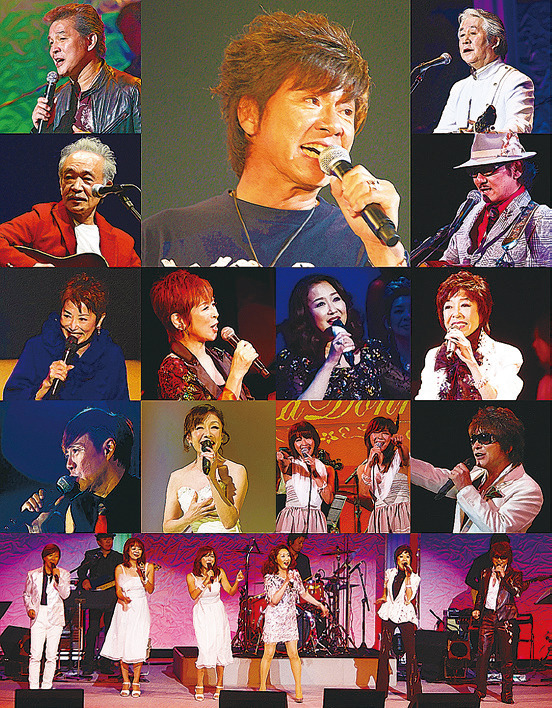
Yume Group hosts "Yume Concerts" nationwide, bringing together singers popular in the 1960s and 70s. These concerts, held over 400 times annually (day and night), attract over 500,000 attendees. The company originated as a mail-order business. Yume Concerts began from President Shigehiro Ishida's observation that "traditional TV programs and concerts lack offerings for seniors." The concerts' theme is "Make Your Heart Thrill." Performers include the company's own talents like Asahi Kobayashi, Hiroki Matsukata, Masao Sen, Hidefumi Miyoshi, Cherish, and Karyudo, alongside veteran singers like Sachiko Kobayashi and Hideki Saijo. The audience is diverse, including senior women's groups, couples, and families. They sing along to past hits, tap their feet to the rhythm, and cheer enthusiastically, creating a lively atmosphere where the stage and audience become one. Merchandise sales and autograph sessions for the performers also draw large crowds of fans.
Ticket orders are accepted by phone or through the company's website. The site features concert reports, attendee comments, and gift announcements. It also links to the company's online store, promoting original products like karaoke microphones and Showa-era song CD sets. On September 3rd, the first "Yume Record" CD release featured a duet by Asahi Kobayashi and Ruriko Asaoka, expanding the scope of the project.


Catering to the Senior Generation
The Power of the Personality
Since last spring, they've been broadcasting "Radio Purple," a one-hour program airing weekdays starting at 4:00 AM. The personalities are veteran announcers in their late 40s to 50s, and both the topics and music selections are very much geared towards the senior generation. While TBS Radio has traditionally enjoyed strong support from the senior generation, the influence of personalities with rich life experience, such as Yuri Osawa of "Yuu Yuu Wide" and Mr. Eiji of "Eiji Rokuhoshi: His New World," is substantial. It's likely that subtle remarks like "Please join us even if you're recovering from illness" capture the hearts of listeners.
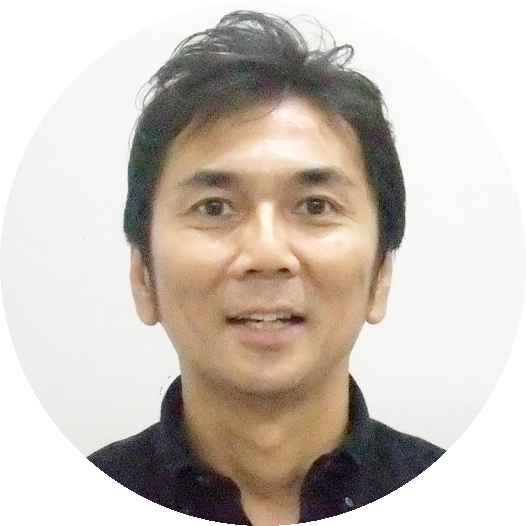
TBS Radio & Communications, Programming Division Director
Mr. Fujio Ishigaki
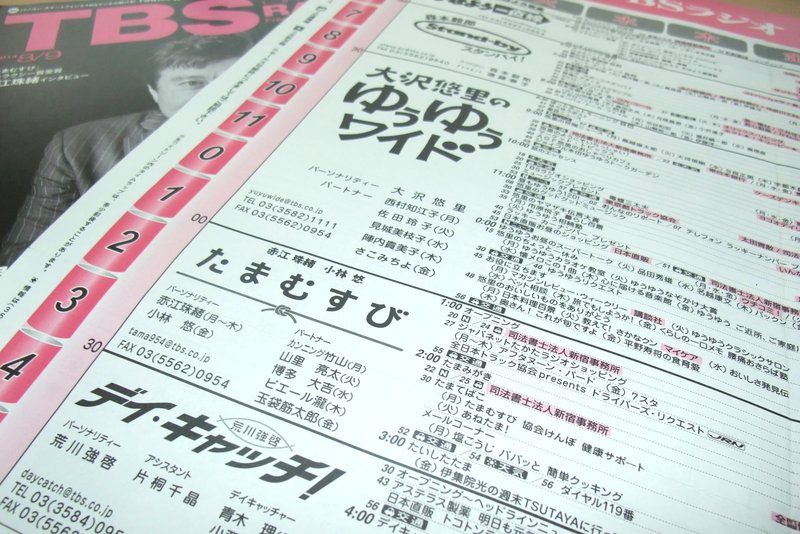
Furthermore, TBS Radio has prioritized news since around 1995. The morning show "Morimoto Kirō Standby!" delivers the most important news from the previous day and the current day. The evening show "Arakawa Tsuyoshi Day Catch!" provides secondary information, examining news from different angles. Then, the nighttime show "Ogami Chiki Session-22" selects one news story from the day and encourages listeners to think deeply about it together. This programming approach, which delves deeply into the day's news, is likely one reason it resonates with the senior generation, who tend to have a high level of social awareness.
The reassurance of encountering "the standard" attracts readers
The average age of Sarai readers is in their late 50s. Yet, they lead active daily lives and possess a strong intellectual curiosity. While covering themes like travel, food, fashion, and prominent figures and traditional cultures from Japan and abroad, recent features resonating most deeply are those touching on "the beauty of Japan" and "the Japanese spirit." Our special feature on Buddhist statues also garnered significant response. Many readers engage not merely to admire the artistic splendor, but to connect it to their own lives. Acquiring knowledge isn't the goal itself; rather, they want to use that knowledge to reflect on how they should live. I believe this sentiment runs very strong.

Shogakukan, Editor-in-Chief of Sarai
Mr. Shingo Kosaka
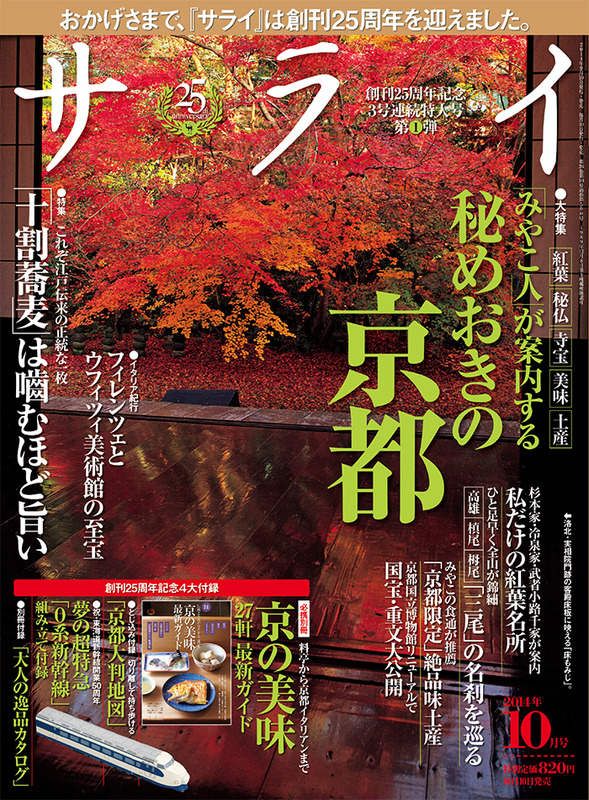
Regardless of the genre, what we aim to convey is a "standard" appropriate for that generation. Even when introducing a single hobby tool, we present products that are "a lifetime investment if you have this one." I believe the reassurance that comes from encountering such standards is a major reason for our long-standing support. Marking our 25th anniversary, we also plan to effectively utilize the website "Sarai.jp," where our magazine readers also become members, from a marketing perspective.
Was this article helpful?
Newsletter registration is here
We select and publish important news every day
For inquiries about this article
Author

Hiroyuki Murata
President, Murata Associates / Specially Appointed Professor, Tohoku University
Graduated from Tohoku University Graduate School of Engineering in 1987. After working at Japan Research Institute and other organizations, founded Murata Associates in 2002. Appointed as a Specially Appointed Professor at Tohoku University in 2006. As a pioneer in the senior business field, he has participated in new business development and management for numerous companies. As a leading authority on aging society research, he has given many lectures and authored numerous publications. He has also held numerous public positions, including roles at the Ministry of Economy, Trade and Industry. His major publications include "The Textbook for Successful Senior Business" (Nikkei Publishing) and "The Impact of the Senior Shift" (Diamond Inc.), among many others.

Tetsu Saito
At Dentsu Inc., he serves as Senior Research Director at Dentsu Senior Lab, Future Forecasting Support Lab, and Dentsu Desire Design. After working at Seibu Department Store, the Distribution Industry Research Institute, and PARCO, he joined Dentsu Inc. He is currently involved in a wide range of activities, from product development and business development to event production, focusing on the super-aged society and future forecasting. His publications include: "Creating Problem-Solving Businesses to Reduce 'Troubles' in a Super-Aged Society" (Shoeisha), "Marketing in a Super-Aged Society" (Diamond Inc.), "A Social History of Shopping Malls" (Sairyusha), and "Why Kichijoji Became 'The Most Desirable Place to Live Now'" (Bunsin Publishing). Visiting Researcher at the International Longevity Center (ILC), Lecturer at Waseda Life Redesign College (LRC), Certified Social Worker. Left Dentsu Inc. at the end of October 2023.